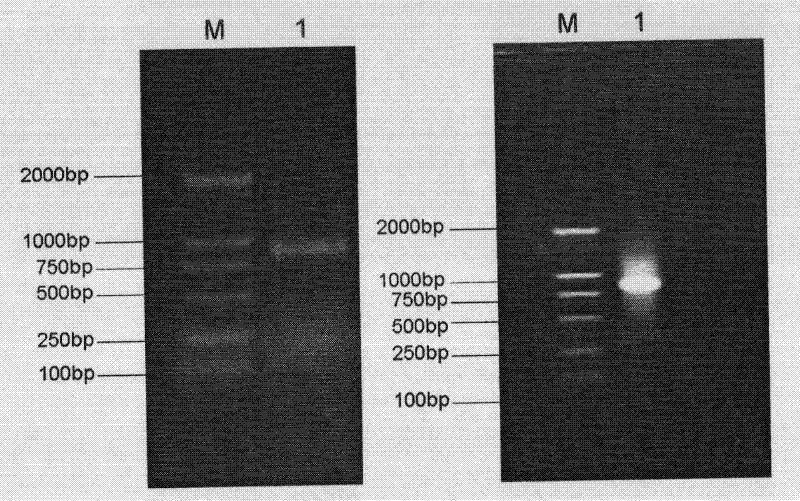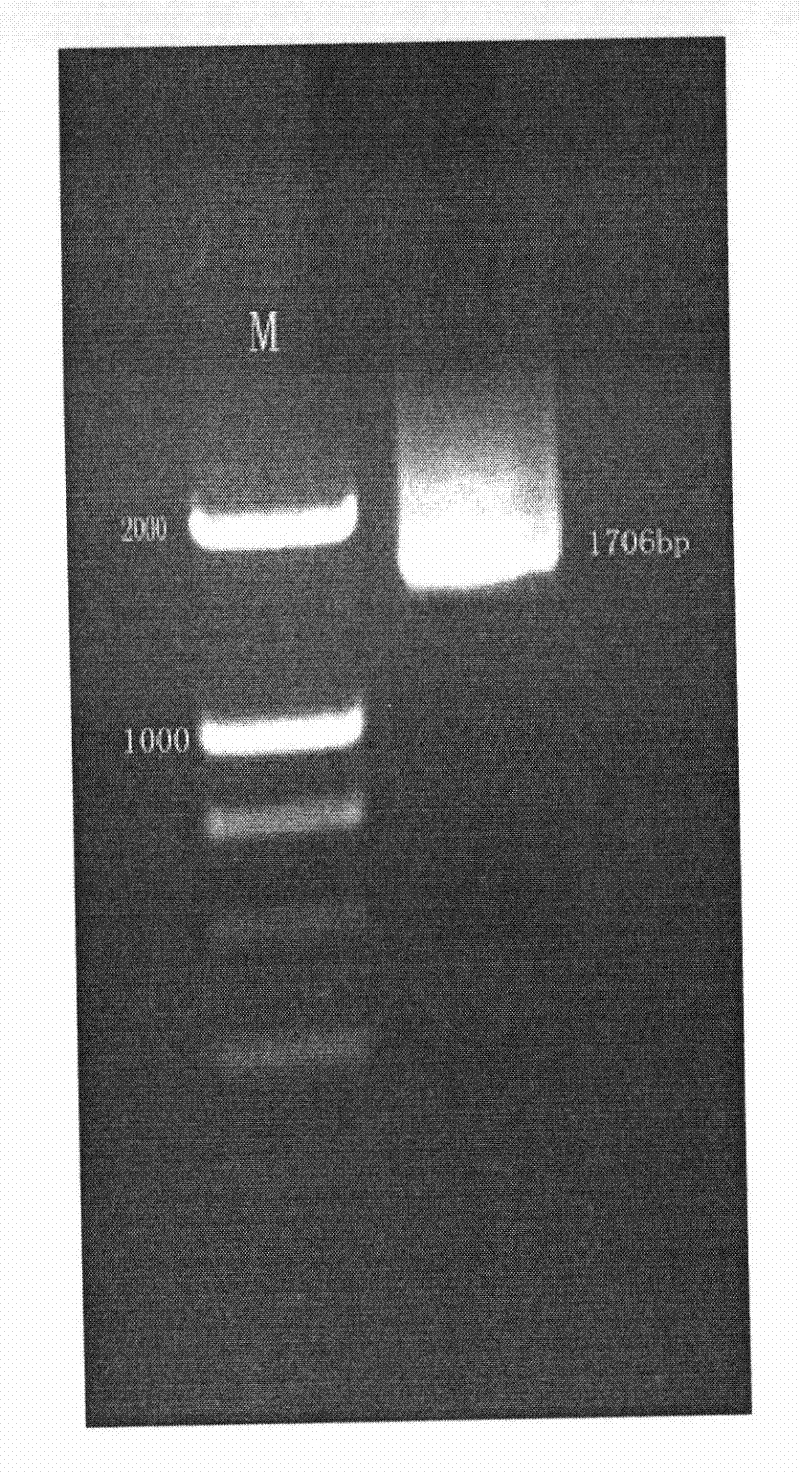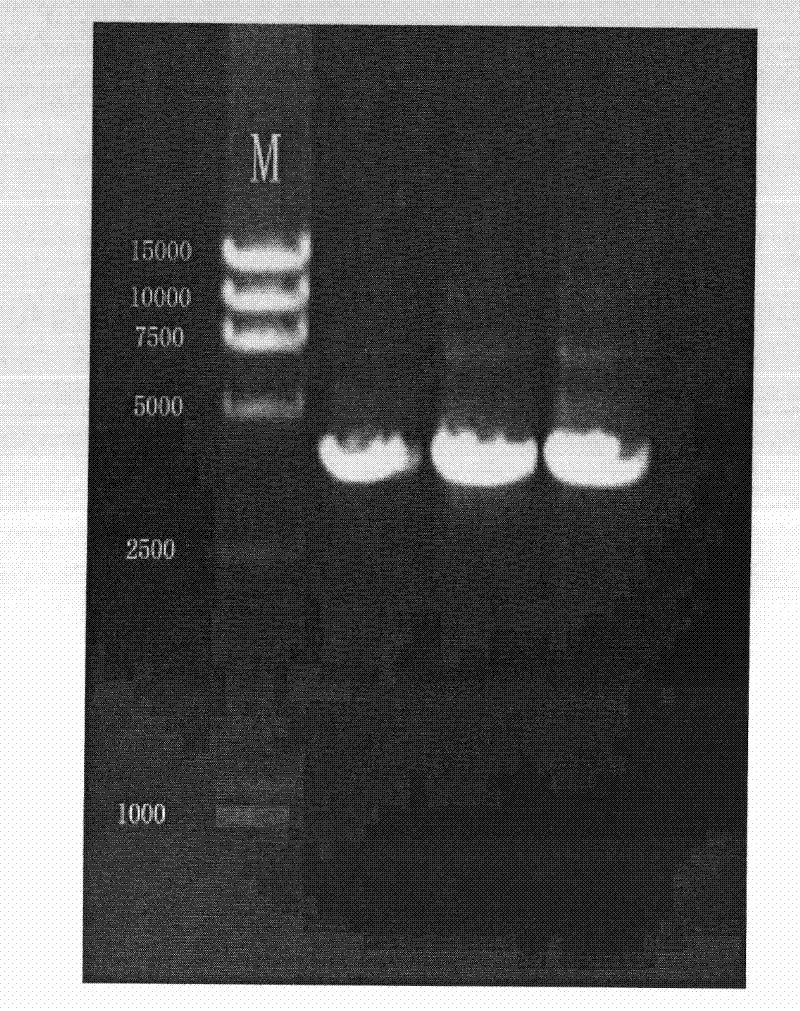Soybean photoreceptor GmPLP1 and coding gene and application thereof
A technology of encoding gene and transgenic plant, applied in soybean photoreceptor GmPLP1 and its encoding gene and application field, can solve the problems of less research on soybean photoreceptor gene cloning and functional analysis, etc.
- Summary
- Abstract
- Description
- Claims
- Application Information
AI Technical Summary
Problems solved by technology
Method used
Image
Examples
Embodiment 1
[0076] Cloning of embodiment 1, GmPLP1
[0077] 1. Cloning of GmPLP1
[0078] 1) Extraction of plant total RNA
[0079] Soybean (Glycine max (L.) Merrill.) late-maturing variety Dongnong L13 (Lin Zhao and Wenbin Li*(2008) A RAV-like transcription factor control photosynthesis and senescence in soybean. Planta. 227: 1389-1399, available to the public from Northeast Obtained from Agricultural University.), with infinite pod habit, cultivated in 25℃ light incubator, 250μmol m -2 sec -1 White light, grow under long-day (LD) (16h / 8h light / dark) conditions, after the first three compound leaves unfold (10 days after emergence), start short-day (SD) photoperiod treatment, (8h / 16h light / dark) cultured on the 15th day after the treatment, when the dark / light alternated, samples were taken, and the third three-fold compound leaf was cut off, quick-frozen in liquid nitrogen, and stored at -80°C for total RNA extraction. Soybean total RNA was extracted according to the method of Triz...
Embodiment 2
[0176] Example 2, Obtaining and Phenotypic Research of Transgenic Tobacco Plants Overexpressing GmPLP1 Gene
[0177] 1. Acquisition of transgenic GmPLP1 tobacco
[0178] 1. Construction of Agrobacterium binary expression vector
[0179] The intermediate vector pGEMT-GmPLP1 obtained in Example 1 was double-digested with BamHI and Sac I, and the obtained small fragment was similarly digested with pBI121 (purchased from Beijing Baierdi Biotechnology Co., Ltd., product number: MP-091 ) the connection of the large pieces of vectors obtained, the obtained connection products were transformed into Escherichia coli DH5α, and the obtained transformants were identified by bacterial liquid PCR. The sub-extracted plasmid was identified by double enzyme digestion with BamHI and Sac I, and a plasmid with a size of 1768bp was obtained, and then sent for sequencing. The result was that the plasmid was inserted into pBI121 from the 3rd to 1706th nucleotides of the sequence 1 in the sequence t...
Embodiment 3
[0267] Example 3, Obtaining and Phenotypic Research of Transgenic Soybean Plants Overexpressing GmPLP1 Gene
[0268] 1. Obtaining GmPLP1 overexpression soybean
[0269] 1. Hypocotyl transformation method
[0270] Soybean (Glycine max (L.) Merrill.) (variety Heinong 44, purchased from Beidahuang Seed Industry Group Co., Ltd., hereinafter referred to as wild-type soybean.) was sterilized by chlorine gas for 16 hours, and then planted in germination medium (MS+ 3% sucrose+0.8% agar, pH5.8), after seven days, cut the hypocotyl of 1cm length as explant, soak 30min in the LBA4404 / pBI121-GmPLP1 bacterium liquid that obtains by embodiment 2; Use sterile filter paper Blot dry the bacterial solution on the surface of the plant material, place the hypocotyls flat on the co-cultivation medium (1 / 2 MS large amount of salt + MS iron salt + 1.67 mg / L 6-benzylaminopterin + 40 μM acetyl clove) covered with a layer of filter paper Ketone + 1mg / L sodium thiosulfate + 1mg / L cysteine + 1.0mg / L...
PUM
| Property | Measurement | Unit |
|---|---|---|
| area | aaaaa | aaaaa |
| area | aaaaa | aaaaa |
Abstract
Description
Claims
Application Information
 Login to View More
Login to View More - R&D
- Intellectual Property
- Life Sciences
- Materials
- Tech Scout
- Unparalleled Data Quality
- Higher Quality Content
- 60% Fewer Hallucinations
Browse by: Latest US Patents, China's latest patents, Technical Efficacy Thesaurus, Application Domain, Technology Topic, Popular Technical Reports.
© 2025 PatSnap. All rights reserved.Legal|Privacy policy|Modern Slavery Act Transparency Statement|Sitemap|About US| Contact US: help@patsnap.com



